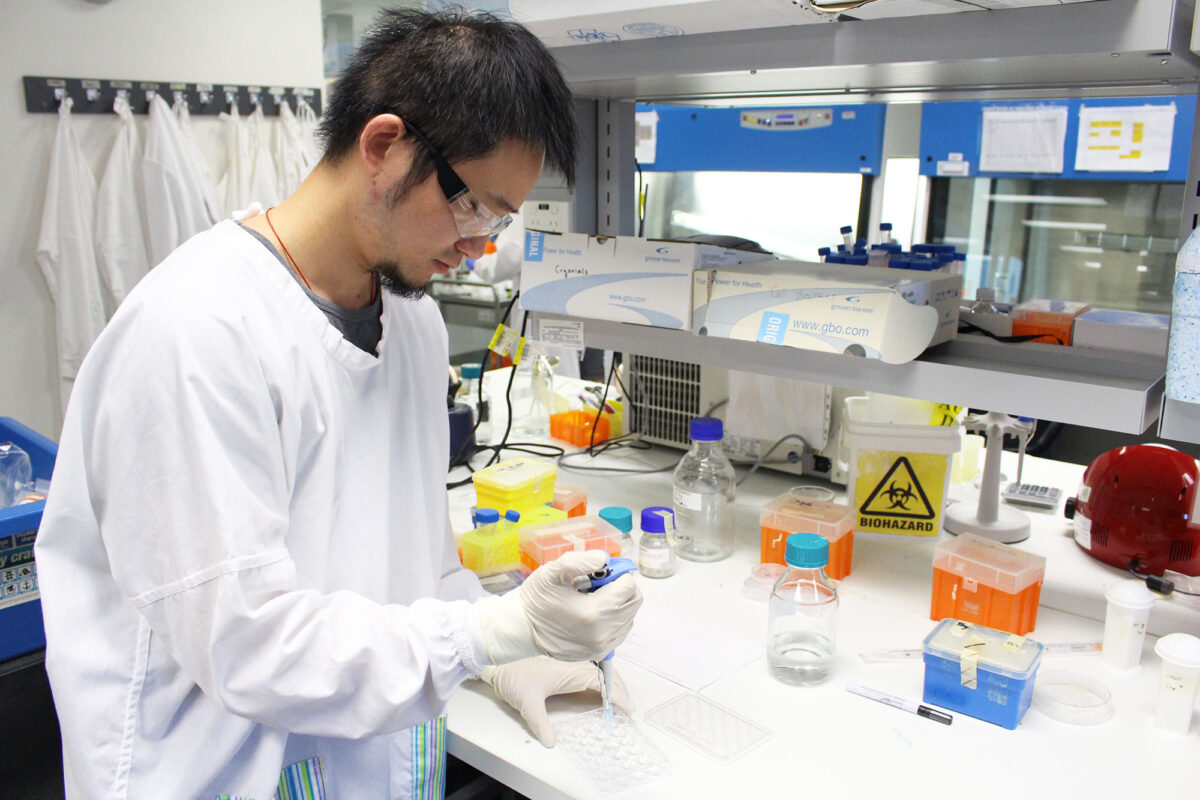News
3D printing bone tissue
Jun 28 2022

What is your role at TRICEP?
I am an associate research fellow at TRICEP and the Australian National Fabrication Facility (ANFF), providing the synthesis of biomaterials, biofabrication device development and biological characterisation support to a range of projects.
I assist in the design and testing of novel biofabrication equipment, such as our bioprinters and electro-compaction hardware. I also ensure that our bioink and scaffold are suitable for targeted biomedical applications by evaluating the biophysical properties and in vitro performance.
What is your area of expertise and what kind of experience do you have in this area?
My research expertise lies in the area of biomedical engineering, ranging from theory and design to implementation.
During my PhD and short but exciting career, I have been actively collaborating with clinicians in several other disciplines of medical and biological science, particularly corneal and neural bioengineering for clinical application.
What are some of the projects and collaborations you are currently working on?
I am currently involved in many projects and collaborations, including corneal bioengineering as well as the iFix Pen project with Prof Gerard Sutton and his group (Save Sight Institute, University of Sydney), the heart valve bioengineering project with Prof Jaishankar Raman (Austin & St Vincent’s Hospital Melbourne) and the neural regeneration project with Prof Mario Romero-Ortega (University of Houston).

What is the future outlook of these projects?
Focusing on the iFix ink project, we are optimizing and evaluating the iFix system (iFix pen and ink), exploring suitable storage conditions, sterilisation methods and packaging for its delivery to the end-users. In parallel regulatory and manufacturing issues are being addressed. We expect to see the iFix system being applied in the clinic in the next few years.
How is this work being translated into real applications?
As estimated by the World Health Organization (WHO), 4.9 million people have bilateral corneal blindness and 23 million are estimated to suffer from unilateral blindness. Currently, corneal transplantation remains the primary treatment, with 72 percent of recipients showing visual improvement. Its clinical application, however, is considerably limited by the severe shortage of qualified allogeneic corneal tissues and transplant rejection. Our engineered corneal stromal model holds significant promise as corneal stromal substitutes, with the potential to be used for full-thickness cornea replacement to be used in corneal transplantation, as well as informing in vivo cell and tissue function and regeneration.
By printing a transparent structure that seals the wound and prevents pathogen infiltration, the iFix system has great potential to relieve pain and promote corneal healing.
Contact our TRICEP staff for all enquires here.













